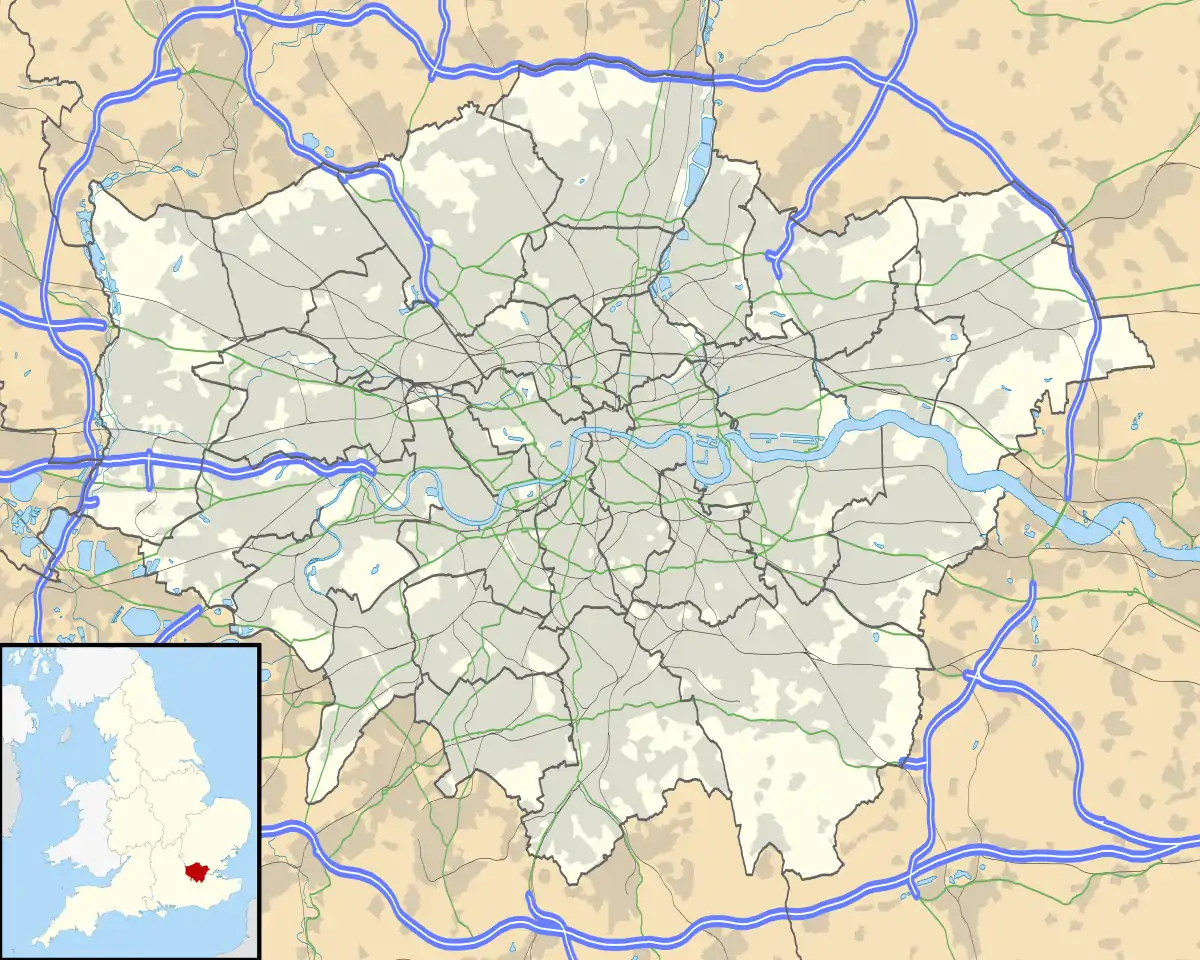West Kensington tube station
West Kensington is a London Underground District line station in West Kensington. It is located on North End Road (B317) close to its junction with West Cromwell Road/Talgarth Road (A4).
| West Kensington | |
|---|---|
 | |
 West Kensington Location of West Kensington in Greater London | |
| Location | West Kensington |
| Local authority | London Borough of Hammersmith and Fulham |
| Managed by | London Underground |
| Number of platforms | 2 |
| Fare zone | 2 |
| London Underground annual entry and exit | |
| 2015 | |
| 2016 | |
| 2017 | |
| 2018 | |
| 2019 | |
| Key dates | |
| 9 September 1874 | Opened (DR) |
| 5 May 1878 | Started "Super Outer Circle" (Midland) |
| 30 September 1880 | Ended "Super Outer Circle" |
| 14 July 1965 | Goods yard closed[4] |
| Other information | |
| External links | |
| WGS84 | 51.4908°N 0.2063°W |
The station is between Earl's Court and Barons Court and is in Travelcard Zone 2.
The station is situated in a cutting with the ticket office at street level.
History
The station was opened by the District Railway (DR, now the District line) on 9 September 1874 as 'North End (Fulham)'[5][6] when it opened its extension from Earl's Court to Hammersmith. At that time the next station west was Hammersmith - Barons Court did not open until 1905. It was renamed West Kensington in 1877.
On 5 May 1878, The Midland Railway began running a circuitous service known as the "Super Outer Circle" from St Pancras to Earl's Court via Cricklewood and South Acton. It operated over a now disused connection between the NLR and the London and South Western Railway's branch to Richmond (now part of the District line). The service was not a success and was ended on 30 September 1880.
The entrance building was rebuilt in 1927. The design, by Charles Holden, uses similar materials and finishes to those Holden used for the Northern line's Morden extension opened in 1926.
In 2009, because of financial constraints, TfL decided to stop work on a project to provide step-free access at West Kensington and five other stations, on the grounds that these are relatively quiet stations and some are already one or two stops away from an existing step-free station.[7] Earl's Court and Hammersmith stations which have step-free access are respectively one stop to the east and two stops to the west. £5.05 million was spent on West Kensington before the project was halted.[8]
Services
The off-peak service pattern is:
- 6 trains per hour to Ealing Broadway
- 6 tph to Richmond
- 12 tph to Upminster.
Connections
London Buses Routes 28, 306 and Night Route N28 serve the station.
References
- "Multi-year station entry-and-exit figures (2007–2017)" (XLSX). London Underground station passenger usage data. Transport for London. January 2018. Retrieved 22 July 2018.
- "Station Usage Data" (CSV). Usage Statistics for London Stations, 2018. Transport for London. 21 August 2019. Retrieved 27 April 2020.
- "Station Usage Data" (XLSX). Usage Statistics for London Stations, 2019. Transport for London. 23 September 2020. Retrieved 9 November 2020.
- Hardy, Brian, ed. (March 2011). "How it used to be - freight on The Underground 50 years ago". Underground News. London Underground Railway Society (591): 175–183. ISSN 0306-8617.
- Forgotten Stations of Greater London
- Chronology of London Railways by H.V.Borley
- "Disability and Deaf Equality Scheme (DES) 2009-2012". TfL. Retrieved 1 December 2010.
- "TfL wastes £64million abandoning disabled access plans on the Tube". Evening Standard. 21 April 2010. Retrieved 6 December 2010.
External links
| Wikimedia Commons has media related to West Kensington tube station. |
- London Transport Museum Photographic Archive
- Booking hall, 1927
- Booking hall, 1928
- Eastbound platform, 1972. The branch track to Lillie Bridge depot is just visible at the end of the platform.
- Tube Professional's Rumour Network - Lillie Bridge depot
| Preceding station | Following station | |||
|---|---|---|---|---|
| District line | ||||
| Former service | ||||
| Hammersmith towards St Pancras |
Midland Railway (1878–80) |
Earl's Court Terminus | ||